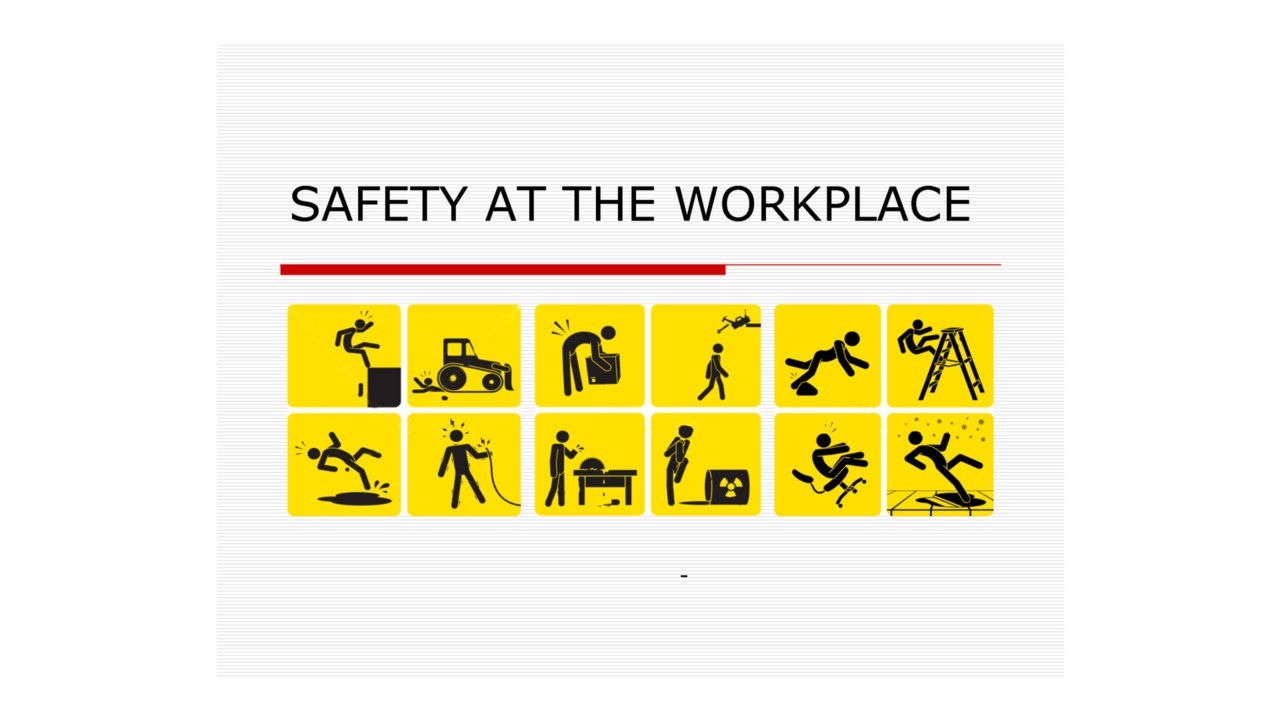Hazards may arise from
- The workplace environment e.g. insufficient lighting
- Equipment/Plant e.g. a noisy engine which has not been insulated
- Substances e.g. explosive fumes building up in a storage area; and
- Work systems e.g. storage of files at high level causing retrieval hazards
Examples of work related hazards and risks
a) Use of work equipment
- Inadequately guarded rotating or moving parts which can crush, clip, stab, knock, catch or pull
- Free movement of parts or material (falling, rolling, sliding, tipping, flying off, swinging, collapsing) which may result in a person being hit
- Machine and vehicle movements
- Danger of fire and explosion (e.g. from friction, pressure vessels)
- Trapping
b) Work practices and layout of premises
- Hazardous surfaces (sharp edges, corners, points, rough surfaces, protruding parts)
- Working at heights
- Tasks involving awkward movement/postures
- Limited space (e.g. having to work between fixed parts)
- Tripping and slipping (wet or other slippery surfaces etc.)
- Stability of workstation
- Impact of wearing personal protective equipment on other aspects of work
- Work techniques and methods
- Entry and work in confined spaces
c) Use of electricity
- Electrical switchgear
- Electrical installations, e.g. ring mains, lighting circuits
- Electrically-operated equipment, controls, insulation
- Use of portable electric tools
- Fire or explosion initiated by electrical energy
- Overhead electric lines
d) Exposure to substances or preparations hazardous to health and safety
- Inhalation, ingestion and skin absorption of material hazardous to health (including aerosols and particulates)
- Use of flammable and explosive materials
- Lack of oxygen (asphyxia)
- Presence of corrosive substances
- Reactive/unstable substances
- Presence of sensitizers
e) Exposure to physical agents
- Exposure to electromagnetic radiation (heat, light, x-ray, ionizing radiation)
- Exposure to lasers
- Exposure to noise, ultrasounds
- Exposure to mechanical vibrations
- Exposure to hot substances/media
- Exposure to cold substances/media
- Presence of fluids under pressure (compressed air, steam, liquids)
f) Exposure to biological agents
- Risk of infection arising from handling and resulting in unintentional exposure to micro-organisms, exo- and endo- toxins
- Risk of infection due to inadvertent exposure to micro-organisms (e.g. legio-nella dispersed from wet cooling towers)
- Presence of allergens
g) Environmental factors and working climate
- Inadequate or inappropriate illumination
- Inappropriate control of temperature/humidity/ventilation
- Presence of pollutants
h) Interaction of workplace and human factors
- Dependence of safety system on need to receive and process information accurately
- Dependence on knowledge and capabilities of staff
- Dependence on norms of behaviour
- Dependence on good communication and proper instructions to tackle changing conditions
- Impact of reasonably foreseeable departures from safe working procedures
- Suitability of personal protective equipment
- Poor motivation to work safely
- Ergonomic factors, such as design of the work station to suit the worker
i) Psychological factors
- Severity of work (intensity, monotony)
- Workplace dimensions, e.g. claustrophobia , working alone
- Role ambiguity and/or conflict
- Contribution to decision-making affecting work and task
- High demand, low control of work
- Reactions in event of emergencies
j) Work organization
- Factors conditioned by work processes (e.g. continuity, shift systems, working at night)
- Effective management systems and arrangements in place for organizing, planning, monitoring and controlling the health and safety process.
- Maintenance of equipment including safety equipment
- Proper arrangements for dealing with accidents and emergencies
k) Miscellaneous factors
- Dangers caused by other people e.g. violence to counter staff, staff-security guards, police and sports
- Working with animals
- Working in pressurized or under-pressurized atmospheres
- Severe weather conditions
- Software integrity
- Working near or under water
- Variable workplaces
This is an illustrative list and is not exhaustive.
Source; The South African Labour Guide
